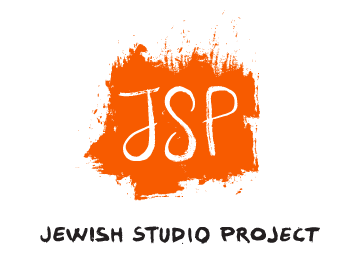
To understand more about how JSP uses this source sheet, see The Jewish Studio Project's Approach to Text Study.
(1) When God began to create heaven and earth— (2) the earth being unformed and void, with darkness over the surface of the deep and a wind from God sweeping over the water— (3) God said, “Let there be light”; and there was light. (4) God saw that the light was good, and God separated the light from the darkness. (5) God called the light Day, and the darkness God called Night. And there was evening and there was morning, a first day.
- What is your initial reaction to these opening verses of the Torah? What images, questions, sensations do these verses evoke for you?
- How would you describe God’s creative process? What do you see as the steps?
- What do you notice about the specific verbs that are used? What sort of feelings do those bring up for you?
- What insight can you draw from this text about your own creative process?
(ב) וְהָאָ֗רֶץ הָיְתָ֥ה תֹ֙הוּ֙ וָבֹ֔הוּ ...
(2) the earth being unformed and void...
-
Chaos and void is often spoken of together, let’s tease these two words apart. What images, thoughts and sensations do you associate with the word “chaos”? What about “void”? What does each bring up for you?
פִּילוֹסוֹפִי אֶחָד שָׁאַל אֶת רַבָּן גַּמְלִיאֵל, אֲמַר לֵיהּ צַיָּר גָּדוֹל הוּא אֱלֹהֵיכֶם, אֶלָּא שֶׁמָּצָא סַמְּמָנִים טוֹבִים שֶׁסִּיְּעוּ אוֹתוֹ, תֹּהוּ, וָבֹהוּ, וְחשֶׁךְ, וְרוּחַ, וּמַיִם, וּתְהוֹמוֹת. ...
A philosopher once questioned Rabban Gamliel and said to him, ''Your God is only a great artist because God found great materials that helped him: tohu and vohu, darkness, spirit, water, and the depths."...
Bereishit Rabbah is a collection of rabbinic interpretations of Torah, 300-500 CE
-
Why might the philosopher in this text consider these elements that preexisted creation as useful in God’s process of creating the world?
-
Tradition teaches “adam olam katan, olam adam gadol” - the human is a microcosm of the universe, the universe a macrocosm of the human being. If we were to understand “chaos, void, darkness, water, wind and depths” existing within each of us - what might we see these as metaphors for?
...Viewing the story of Creation as a model from which to learn about the human process of creating, it is interesting to examine whether a cognitive state of "unformed and void" relates to the processes by which human beings are creative. For example, everyone who creates might have to "break" and "disorganize" the familiar picture of the world in order to free himself from it and view reality in another way. Current research dealing with creative thought indeed supports this assertion and points to the need for a sort of tohu va-vohu, or a certain measure of what one might term cognitive chaos, in order to discover and create something new in all walks of human creativity. These findings associate the state of being "unformed and void" that preceded Creation with a universal human state which is a precondition for the ability to create….
- What is the author saying about chaos and void in this piece? What is your reaction to these ideas?
- We might say we are living at a time of great “chaos” and “void.” How are you experiencing chaos / void in this moment?
- It is from the state of chaos and void that God’s creative process begins and the entire world is born. Are there sparks of beginnings for you in this moment?
To all that is chaotic
in you,
let there come silence.
Let there be
a calming
of the clamoring,
a stilling
of the voices that
have laid their claim
on you,
that have made their
home in you,
that go with you
even to the
holy places
but will not
let you rest,
will not let you
hear your life
with wholeness
or feel the grace
that fashioned you.
Let what distracts you
Cease.
Let what divides you
Cease.
Let there come an end
to what diminishes
and demeans,
and let depart
all that keeps you
in its cage.
Let there be
an opening
into the quiet
that lies beneath
the chaos,
where you find
the peace
you did not think
Possible
and see what shimmers
within the storm.
- How does this poem speak to the texts explored in this source sheet?




